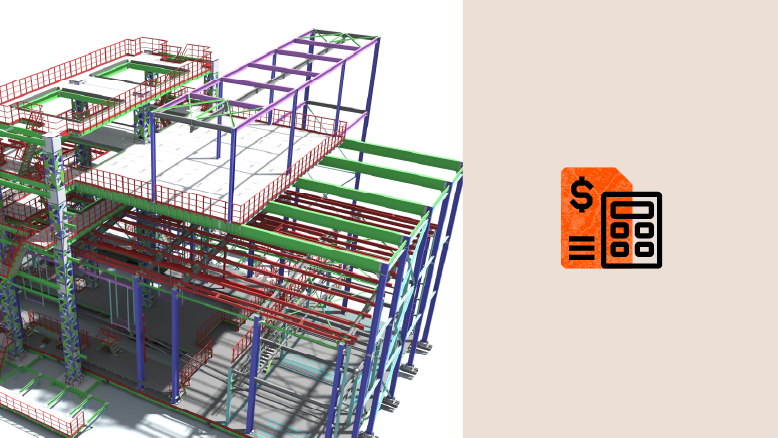— 10 min read
Construction Project Over Budget? Common Causes & Solutions


Last Updated Jul 29, 2025

TJ Forbes
Senior Solutions Engineer
19 articles
TJ Forbes is a Senior Solutions Engineer at Procore, specializing in financials products, analytics, ERP integrations, workflows, reporting and accounting solutions. He previously worked as a financial manager and project accountant for Stiles, a commercial real estate firm in Ft. Lauderdale. TJ holds a Masters in Financial Management from Southern Adventist University.

Taylor Riso
Contributing Writer
91 articles
Taylor Riso is a marketing professional with more than 10 years of experience in the construction industry. Skilled in content development and marketing strategies, she leverages her diverse experience to help professionals in the built environment. She currently resides in Portland, Oregon.
Last Updated Jul 29, 2025

On construction projects, going over budget is an all-too-common scenario. This situation is more than a mere miscalculation: It can fundamentally alter the trajectory and outcome of a construction project and the companies involved.
In the article, we delve into what happens when a project goes over budget — and how to prevent it from happening in the future.
Table of contents
Why do construction projects go over budget?
While the factors leading to cost overruns on construction projects can vary based on project type and complexity, there are several common causes that often result in projects going over budget.
- Estimating errors: Even seemingly small oversights can escalate into significant additional costs, demonstrating how crucial accuracy is in the preconstruction phase. During this stage, detailed planning and precise estimates form the backbone of budgeting and establish the financial blueprint for the entire project. The frequency of estimating errors during preconstruction can lead to a domino effect, impacting subsequent stages of construction and ultimately steering the project over its intended budget.
- Preconstruction gaps: Preconstruction omissions or gaps, commonly referred to as precon gaps, are essentially planning and estimation discrepancies that can substantially influence a construction project's budget. A common example of a precon gap is an underestimation of the number of necessary components.
- Poor execution: In construction, onsite efficiency and precision are essential to keeping the project within the defined budget. Rework, which occurs when tasks are initially done incorrectly or not to quality standards, exacerbates this issue as it requires additional time and resources, further inflating the project's costs. The cascading impacts of poor execution underscores the importance of quality execution from the start and highlights the role of effective project management and quality control in mitigating additional costs.
- Field-office disconnection: In the construction industry, there’s often a notable disconnect between the field and the office that can create tension, especially between the teams responsible for estimating and those on the construction site. As the construction phase kicks off, the reality on the ground can present unforeseen challenges or variances from the initial estimates — potentially sparking conflicts and requiring revisions to the original budget.
- Changing external factors: External factors play a significant role in the financial dynamics of construction projects, often serving as uncontrollable elements that can impact the budget. Market conditions and material costs are prime examples. Fluctuations in the economy, changes in supply and demand and unforeseen events can all lead to variations in the cost of materials and labor, which are often a significant portion of any construction budget.
Learn more about what causes cost overruns in construction.
What to Do When a Project is Over Budget
Let’s dive into some practical steps to mitigate the financial impact and steer projects back on track when they do go over budget.
Use contingency.
Contingency is a financial buffer that can help to manage unforeseen expenses that arise during the course of a project. This fund is not just about having extra money; it’s about strategic financial planning and foresight to ensure that unexpected costs don't derail the overall project’s profitability.
Effectively using contingency requires differentiating between essential and non-essential expenses and understanding the impact of using these funds on the overall project health. When tapping into contingency reserves, it's crucial to assess the long-term implications. Strategically deciding when to use these funds is a key component of this; if they are used too early or for non-critical issues, they may not be enough available for more pressing unforeseen expenses that could arise later.
Therefore, every decision to utilize contingency funds should be weighed carefully, considering both immediate and potential future needs. Adjusting project plans when contingency funds are used helps to mitigate any potential negative effects on profitability, ensuring the contingency serves its purpose as a protective financial buffer throughout the project lifecycle. While contingency funds can act as an essential safety net, using them carefully and strategically is key to ensuring that they serve their intended purpose without compromising the project's financial success.
Establish processes to manage change orders.
Change orders, or alterations to the project's scope not included in the initial contract, can significantly affect the budget if not handled meticulously. Developing strategies to manage these changes without allowing them to balloon into major budget overruns is essential. By establishing clear protocols for reviewing, assessing and implementing change orders, construction firms can help to ensure that each one is justified and necessary before approval.
Assessing and approving change orders should always involve a thorough evaluation of their impact on the project's budget. Beyond just the initial cost implications, it's essential to grasp the broader consequences of a change, including its domino effect on the project's schedule and ensuing costs, which can escalate and profoundly affect the project's financial course. By thoroughly evaluating the budget implications of each change, project stakeholders can prioritize necessary adjustments while avoiding unnecessary additions that could exacerbate budget issues further. Maintaining a disciplined approach to managing change orders can help owners and general contractors navigate unexpected changes without compromising the financial stability of the project.
Strategically approach the buyout phase.
During the buyout phase, project managers and contractors work to secure the best prices and terms for services, labor and materials. It's a crucial step in cost management, aiming to lock in favorable deals that align with the project's budget constraints. The strategies implemented during buyout include negotiating favorable terms with subcontractors and suppliers, securing cost-effective materials and optimizing labor costs to fit within the established budget. Value engineering serves as another method to enhance the project's cost-effectiveness, identifying areas where expenses can be reduced without impacting quality, scope or performance.
In the buyout phase, it's not just about securing the lowest bid; it's about choosing subcontractor partners who align with the project's broader goals. The right subcontractor offers more than a competitive price; they bring reliability, expertise and a commitment to the project's timeline and budget.
As a true project partner, these subcontractors can proactively identify cost-saving opportunities that don't compromise on quality or efficiency. Their understanding of the project's aims and adherence to its quality standards is crucial. Selecting the wrong subcontractor can lead to increased costs through delays or rework, emphasizing the need to thoroughly consider the long-term impact that subcontractors have on the project's lifecycle.
Learn to protect fees to maintain profitability.
When addressing budget overruns, fee protection strategies become crucial for maintaining profitability and ensuring the project's financial viability. This can be visualized as a three-layered framework designed to shield the anticipated profits of a project. At the heart of this framework lies the profit, the essential element that all project stakeholders (whether owner, general contractor or subcontractor) aim to preserve. Encapsulating the profit are strategic layers of protection, each tailored to reduce financial exposure and safeguard earnings.
Responsibility of Costs
The first layer of defense involves shifting potential costs to another party, typically through contractual agreements. For instance, if an issue arises due to a subcontractor's error, the general contractor can ensure that the subcontractor bears the financial responsibility for rectification, thus helping to preserve the general contractor’s profit margin.
This dynamic illustrates a common practice in the construction industry, where costs are often passed down the chain, with subcontractors usually finding themselves at the end with no one to pass additional costs onto. Due to this structure, subcontractors often bear a disproportionate share of financial burdens. However, in cases of substantial errors that could jeopardize a subcontractor's (or general contractor’s) ability to continue operating, the party above—be it a GC or project owner—might step in to help absorb some costs. This intervention is not totally altruistic; it's a pragmatic approach to prevent project delays or the need to find and pay another contractor to take over, which would further escalate costs and complicate project timelines.
Creating a Contingency Fund
The second layer involves the aforementioned contingency fund, which is a predetermined percentage of the budget set aside to address unexpected issues. This fund acts as a buffer, providing financial resources to address unforeseen challenges without dipping into the project's profits.
Keep in mind, reliance on this fund should be measured; if it's depleted too quickly due to continuous issues on the project, it can no longer serve as a protective layer for the profit.
Stay updated on what’s happening in construction.
Subscribe to Blueprint, Procore’s free construction newsletter, to get content from industry experts delivered straight to your inbox.

How to Prevent Projects from Going Over Budget
By implementing proactive measures and adopting meticulous planning practices, construction firms can minimize financial risks and uphold budgetary integrity throughout the project’s lifecycle.
Leverage technology
Embracing technology can provide a strategic advantage in reducing budget overruns in construction projects. Building Information Modeling (BIM) and virtual design provide a comprehensive and holistic view of the project, enabling teams to meticulously plan and visualize construction activities beforehand. Furthermore, project management software offers real-time insights that bridge the gap between field operations and office planning.
These software platforms facilitate continuous communication and updates, allowing for real-time adjustments and informed decision-making that aligns with the project's goals and budgetary constraints. By integrating BIM, virtual design and project management software, teams can proactively identify and address issues, streamline operations and ensure project execution matches the predefined budget.
Using technology to approach execution holistically enhances coordination among all project stakeholders, fostering a collaborative environment where information is shared seamlessly between the office and the field. This not only maintains the project's alignment with its financial and programmatic goals but also mitigates the risks of cost overruns. Ultimately, the synergy between BIM, virtual design and project management software on construction projects enhances precision, collaboration and predictability, which are all key components for maintaining fiscal health.
Emphasize communication and documentation.
Clear communication plays a critical role in mitigating misunderstandings and minimizing errors that could lead to costly adjustments later in the project lifecycle. Ensuring that all team members, from architects and engineers to contractors and subcontractors, are on the same page helps in synchronizing efforts and maintaining team cohesion. This alignment is essential for identifying potential issues early and allowing for timely interventions that can keep the project within its financial constraints.
Equally important is the role of thorough documentation. Documenting every decision, change and adjustment creates a transparent trail that can be referred back to throughout the project’s duration. This record-keeping is invaluable for tracking the project's progress against its budget, ensuring that any deviation is quickly noticed and addressed. It also provides a reliable source of information for resolving disputes and clarifying decisions, further reinforcing the project's adherence to its budgetary constraints and overall goals.
Understand strategic bidding and contracting.
Strategic bidding and contracting can also significantly influence a construction project's ability to stay within budget. Understanding the risks associated with underbidding is crucial; while it may be a tactic to secure work, it can lead to financial strain if the actual project costs exceed the bid amounts. Strategic bidding requires a delicate balance—it involves being competitive enough to win contracts without compromising on the accuracy of cost and time estimates. Ensuring that bids reflect realistic projections of resources, labor and timelines is fundamental to maintaining financial health throughout the project's lifecycle.
On the flip side, overbidding can also pose challenges, potentially resulting in lost opportunities. It's imperative for construction firms to refine their bidding strategies, incorporating comprehensive risk assessments and leveraging historical data to inform their estimates. By aligning bid submissions with thorough, realistic cost and time assessments, firms can enhance their chances of not only winning contracts but also successfully executing projects within the set budgetary confinements. This approach not only safeguards the firm's financial health but also builds a reputation for reliability and accuracy in project management.
The Due Diligence Now Pays Off Later
The list of reasons why construction projects can go over budget may be endless, but the majority of reasons boil down to lack of planning. Whether it’s from a poorly rendered feasibility study, design flaws, bad estimating, lack of documentation, or even hiring the wrong contractors to perform the work – taking the time to in the planning stage ultimately pays off in the long run. Although you can create a safety net – like contingency funds or pushing off the responsibility of costs – in many cases, using these methods can be a trade off for profits or keeping good relationships with stakeholders.
Was this article helpful?
Thank you for your submission.
100%
0%
You voted that this article was . Was this a mistake? If so, change your vote
Scroll less, learn more about construction.
Subscribe to The Blueprint, Procore’s construction newsletter, to get content from industry experts delivered straight to your inbox.
By clicking this button, you agree to our Privacy Notice and Terms of Service.
Thank you!
You’re signed up to receive The Blueprint newsletter from Procore. You can unsubscribe at any time.
Categories:
Written by

TJ Forbes
Senior Solutions Engineer | Procore Technologies
19 articles
TJ Forbes is a Senior Solutions Engineer at Procore, specializing in financials products, analytics, ERP integrations, workflows, reporting and accounting solutions. He previously worked as a financial manager and project accountant for Stiles, a commercial real estate firm in Ft. Lauderdale. TJ holds a Masters in Financial Management from Southern Adventist University.
View profile
Taylor Riso
Contributing Writer
91 articles
Taylor Riso is a marketing professional with more than 10 years of experience in the construction industry. Skilled in content development and marketing strategies, she leverages her diverse experience to help professionals in the built environment. She currently resides in Portland, Oregon.
View profileExplore more helpful resources

BIM for Construction Cost Control & Budget Management
As the construction industry advances in its digital transformation journey, building information modeling (BIM) is becoming increasingly common. Teams and individuals who push back against using the 3D model and...

How Project Phasing Keeps Construction Projects on Time and on Budget
Managing a construction project involves balancing countless tasks, coordinating multiple trades and meeting strict deadlines. Without a structured approach, it’s easy for projects to fall behind schedule or exceed budget....

Estimate vs. Budget: Tools to Guide Construction Financial Planning
Whether building a residential home, a commercial complex or a large-scale infrastructure development, understanding and managing costs is key to completing a project on time and within financial limits. Effective...

Managing Direct Costs in Construction — and Their Impact on the Budget
Direct costs in construction are expenses directly linked to the construction of a specific project, such as materials, labor and equipment. These costs are key components in project planning and...
Free Tools
Calculators
Use our calculators to estimate the cost of construction materials for your next project.
Templates
Find a template to help you with your construction project tasks.
Material Price Tracker
Get the latest U.S. retail prices and view historical trends for common building materials.
Glossary
Explore key terms and phrases used in the industry.
